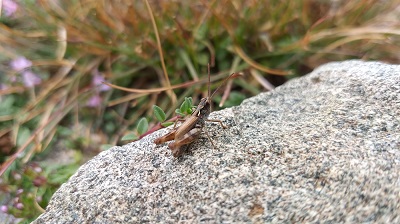Although the pervasiveness of intraspecific wing-size polymorphism and transitions to flightlessness have long captivated biologists, the micro-evolutionary and demographic outcomes of shifts in dispersal ability are not yet well understood and have been seldom studied at early stages of diversification. A new study developed at Estación Biológica de Doñana (CSIC) has employed genomic data to infer the consequences of dispersal-related trait variation in short-winged and long-winged forms of the taxonomically controversial Corsican grasshopper (Chorthippus corsicus).
The analyses showed lack of contemporary hybridization between sympatric long- and short-winged forms and phylogenomic reconstructions revealed their taxonomic distinctiveness, rejecting the hypothesis of intraspecific wing polymorphism and supporting the presence of two distinct species: the short-winged Chorthippus corsicus and the long-winged Chorthippus pascuorum. Molecular data estimated that the two species diverged <1.5 million years ago and are currently reproductively isolated. Although populations of the two species present a marked genetic structure and have experienced parallel demographic histories, the study has revealed that reduced dispersal has limited gene flow among populations and fueled diversification in the short-winged Chorthippus corsicus.
The results of this study illustrate how dispersal reduction can speed up genetic diversification and increase the opportunity for speciation in geographical isolation.
Reference:
Ortego J, Gutiérrez-Rodríguez J, Noguerales V (2021) Demographic consequences of dispersal?related trait shift in two recently diverged taxa of montane grasshoppers. Evolution, in press. https://doi.org/10.1111/evo.14205
https://doi.org/10.1111/evo.14205

 Las altas temperaturas están provocando que las lagunas y las marismas de Doñana pierdan agua rápidamente
Las altas temperaturas están provocando que las lagunas y las marismas de Doñana pierdan agua rápidamente




